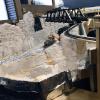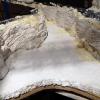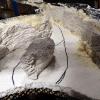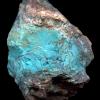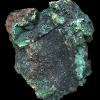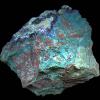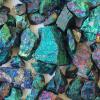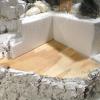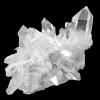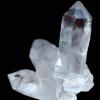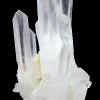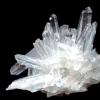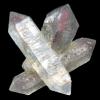Rails and Trails Imaging
Model RR - Geological Features to Add Interest
Please check back for future additions to this page.
Copper Canyon
As another personal interest and hobby, I decided early on that I wanted to incorporate some features of geological interest for fun and educational value. As I studied my landscape, a few ideas began to make sense. I collected natural minerals to enhance the scenes. There are many opportunities for model railroaders to incorporate an area of specific interest and knowledge. I hope this inspires you!
To play slide show, click on the 1st picture.
To play slide show, click on the 1st picture.
Crystal Cavern
Visualize the blue green of Chrysocolla and Malachite along with the brick reds of Cuprite in highly stratified layers of rock in a steep walled canyon with a river of emerald green water and you will get the idea of Copper Canyon. The challenge was to find rock molds that were suitable. I soon found that Bragdon Enterprizes makes excellent molds but they do a poor job of marketing their fabulous variety of selections. Since I wanted to incorporate real samples of the secondary ores of copper, I had another excuse for collecting specimens.
On Quartz Mountain, I wanted to have an old mine opening with a prospector camped outside with his old truck and camping gear. As I realized the scene would be nearly eye-level, I began to think what if you could look inside. Since it is Quartz Mountain, you should find a crystal cavern filled with giant quartz crystals and other mineral specimens. Again a perfect excuse for collecting samples, but this time they had to be the most perfect miniature natural crystals possible. The cavern will use mirrors to expand the effect. There will be one ray of sunshine at a certain time of day that hits the inside of the cavern and brings it to life.
Agate Creek
Agates come in many varieties and would be a perfect fit for a dry wash near the foreground where a visitor could observe some beautifully colored miniature specimens. It would also make sense to include some petrified wood and even broken pieces of geodes. This is all natural material that could erode from the higher mountains and be carried by rushing water down into a creek bed. The challenge of finding the miniature pieces of specimens was nearly impossible. My first find was samples of petrified limbs that could fit the scale and not so broken up as to disguise their shape and identity. From there, everything came together, including some boulder-sized crystal geodes.
Cataract Falls
The water flowing through Copper Canyon comes to a cataract that created a plunging waterfall. This feature demonstrates the forces of nature and how the flow of water can be affected. This cataract was formed over 10 million years ago during a mountain building event. The rock ledges provided natural places for the early native settlers to tell their stories through their rock art. There are featured Petroglyphs and Pictographs that my wife and I have photographed during our many ventures to the southwest. This idea also provided the setting for some dramatic bridges and trestles spanning deep gorges.

